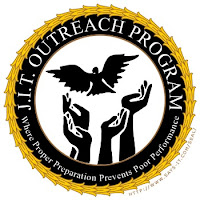Facility Survey Findings
Every state and local correctional system participating in the survey was sent separate surveys for each facility under its jurisdiction that housed youthful offenders. In total, data were collected from 196 adult institutions that housed youthful offenders. However, 15 of these surveys were excluded from the final analysis because they were returned with significant amounts of missing information.
Of the 181 adult facilities that responded to the survey, 148, or 82 percent, were adult prisons. The majority of these institutions, 74 percent, were either medium- or maximum-security institutions. The predominance of higher security facilities appears to be associated with the offense profile of this population, which, as noted earlier, was heavily weighted toward serious violent offenses. Forty-two percent of the institutions were located in small cities, suburbs, or rural areas, following the typical profile of adult prisons. Only 11 percent were located in large cities.
Of the facilities that responded to the survey, only 13 percent maintained separate facilities or units for youthful offenders. By far the more common practice appeared to be that no differentiation was made between adult and juvenile housing units. This finding is perhaps not surprising when viewed in the context of the rationales for moving youth to adult correctional facilities—the increasing severity of their crimes, the failure of rehabilitation, and the difficulty experienced in managing their behavior.
The age of the facilities housing youthful offenders ranged from new to 163 years old. More than 25 percent of the facilities were opened before1965. Another 50 percent were opened between 1965 and 1987. The remaining 25 percent have been open since 1987. The median age of these facilities was 20 years.
Consistent with the operating practices of most adult correctional facilities, 98 percent of the facilities surveyed did not permit community access for youthful offenders. This situation reflects the predominance of medium and maximum-security prisons in the survey and may be more indicative of the serious nature of the offenses for which these youth have been incarcerated than of a lack of appropriate programming for youthful offenders. Lack of community access may also result from the largely rural locations of many adult correctional facilities.
Summary
Juveniles constitute an extremely small proportion of offenders in the nation’s prison system. At the time of this survey, there were 1,069,244 inmates in state prisons but only 4,775, (or 0.5 percent) were under age 18.
Respondents reported 13,876 youthful offender admissions to adult correctional facilities in 1997. The total average female youthful offender population for all reporting systems was only 843 offenders.
The age distribution of the youthful offender population was heavily skewed toward 17-year-olds. Approximately 78 percent of the reported youthful offender population was age 17, with another 18 percent in the 16-year-old category.
Youthful offenders are housed primarily in medium- or maximum-security facilities. Of the institutions surveyed, 42 percent were located in small cities, suburbs, or rural areas, again following the typical profile of adult prisons. Only 11 percent were located in the large cities. Of the facilities that responded to the survey, only 13 percent maintained separate facilities or units for youthful offenders. The more common practice appears to be that no differentiation is made in housing for youthful offenders in adult facilities.

